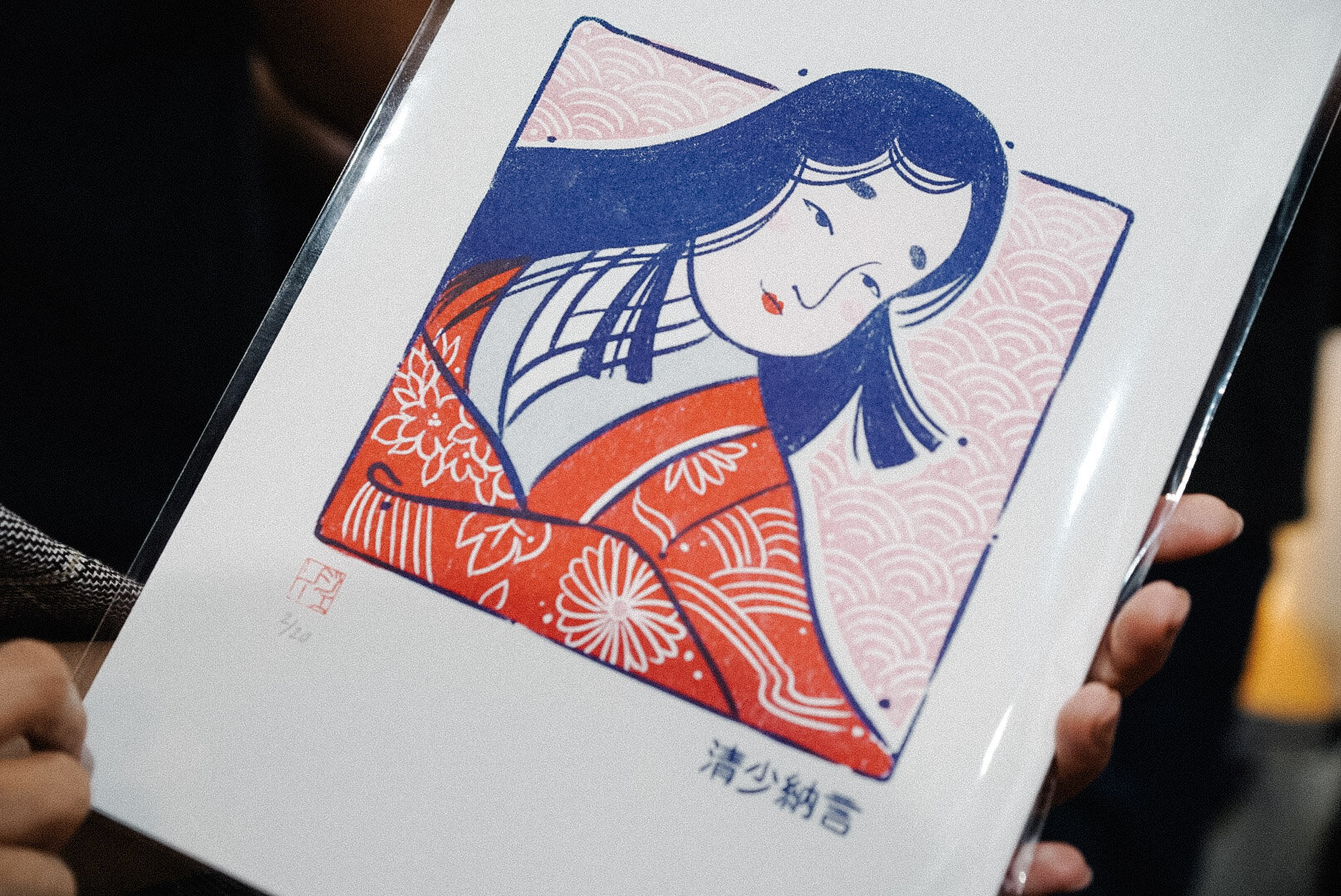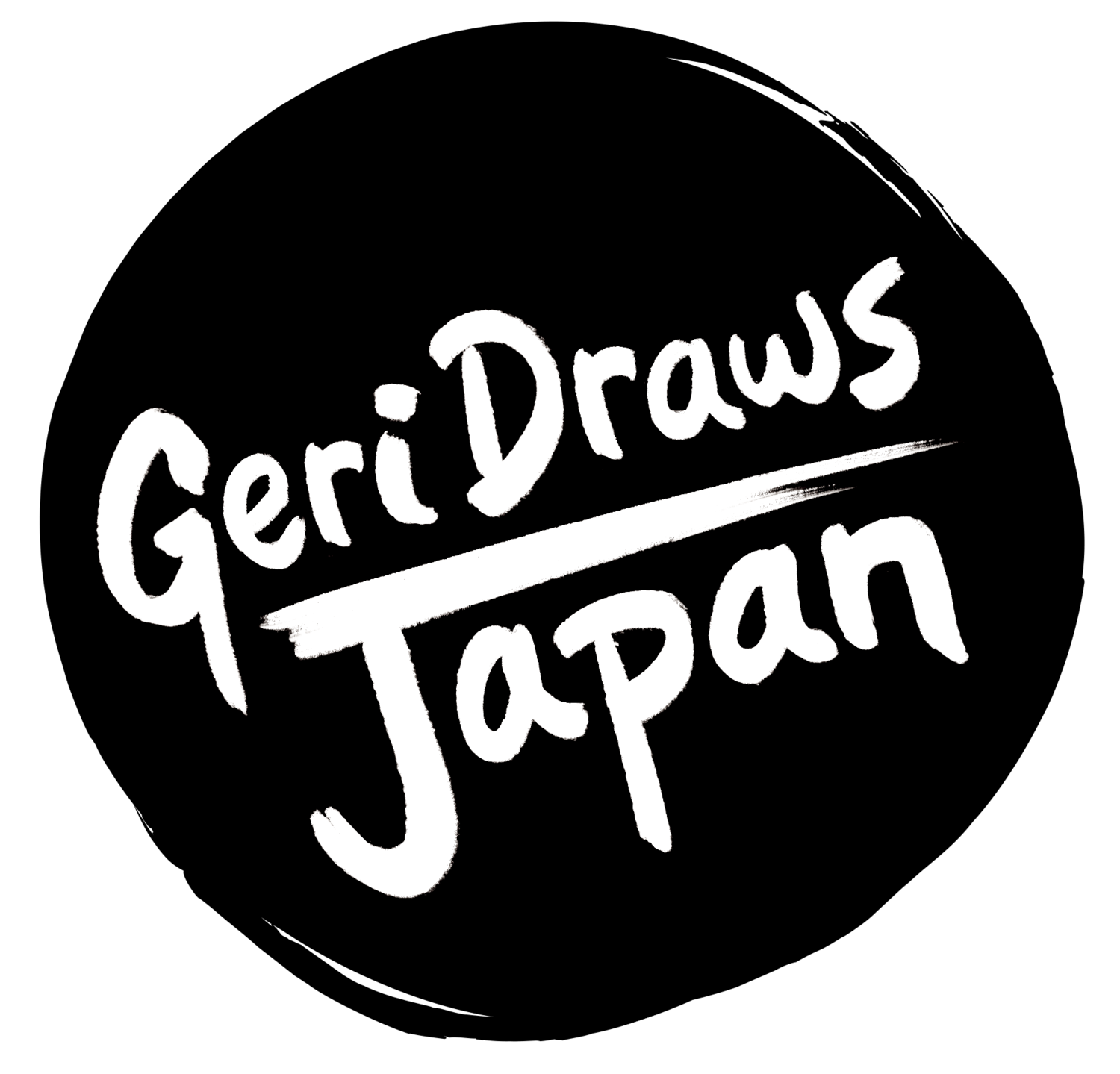 Image 1 of 5
Image 1 of 5

 Image 2 of 5
Image 2 of 5

 Image 3 of 5
Image 3 of 5

 Image 4 of 5
Image 4 of 5

 Image 5 of 5
Image 5 of 5






Sei Shonagon 清少納言 - A4 Riso Print (Signed and Numbered)
Sei Shōnagon 清少納言
Author, poet, and court lady
平安時代中期の作家、歌人 (966年頃-1025年頃)
対立する朝廷は複数の女流作家たちをそそのかして、ライバル関係を引き起こさせようとしました。
Shōnagon Sei was an Imperial court lady who served Empress Teishi during the middle Heian era. As it was custom to refer to court ladies by nicknames, her given name is not confirmed, and most of what is known about her life has been understood through her writing. At age sixteen, she married a government official and gave birth to a son.
Shōnagon’s relationship with fellow writer and court lady Murasaki Shikibu was strained. The courts of Empress Teishi and co-empress Empress Shōshi encouraged rivalry between the writers, pitting the women against each other, despite the possibility that the two had never met. Shōnagon was famously ridiculed in Murasaki’s diary where she complained, “Shōnagon was dreadfully conceited. She thought herself so clever and littered her writing with Chinese characters; but if you examined them closely, they left a great deal to be desired.”
Shōnagon’s work, The Pillow Book, was a collection of poems, anecdotes, and essays giving insight to her life as a court lady. As it was originally meant to be a private work for her enjoyment only, she was able to freely write about her thoughts and opinions that she was not allowed to state publicly. As a result, the book became extremely valuable as a historical document.
Both Shōnagon and Murasaki, as women, had an active role in Heian-era society. Japanese kana, the writing system they used in their writing, was considered “the people’s language” in comparison to the formal Chinese, and made them far more popular and influential for centuries to come.
What is a riso print?
These prints use risograph technology, a method of printing developed in Japan in the mid-1980s. It can be described as a mix between screenprinting and photocopying. The risograph process produces prints with extremely vibrant, crisp inks, and sometimes these inks overlap during the printing process to create interesting and unique details. These soy-based inks also have a lower environmental impact.
Product details
Printed in Tokyo, Japan by Hand Saw Press print studio. Each print is A4 size (210 x 297 mm / 8.27 x 11.69 in) and printed on Natural White 186gsm Takeo Araveal paper. Acid-free and FSC Approved.
Each print is signed with a traditional Japanese ‘hanko’ artist stamp and hand-numbered from a limited edition of 20. Prints are packaged in cello bags with rigid cardboard inserts and shipped in flat mailers.
Please note that frames are not included.
Delivery times & prices
We ship worldwide. 日本へ国際郵便で送ります。
UK deliveries: 3-4 working days via Royal Mail 1st class
International deliveries available via Royal Mail International Standard Airmail
Prices calculated during checkout
For more information on shipping times for international deliveries, please check the delivery & returns page.
Sei Shōnagon 清少納言
Author, poet, and court lady
平安時代中期の作家、歌人 (966年頃-1025年頃)
対立する朝廷は複数の女流作家たちをそそのかして、ライバル関係を引き起こさせようとしました。
Shōnagon Sei was an Imperial court lady who served Empress Teishi during the middle Heian era. As it was custom to refer to court ladies by nicknames, her given name is not confirmed, and most of what is known about her life has been understood through her writing. At age sixteen, she married a government official and gave birth to a son.
Shōnagon’s relationship with fellow writer and court lady Murasaki Shikibu was strained. The courts of Empress Teishi and co-empress Empress Shōshi encouraged rivalry between the writers, pitting the women against each other, despite the possibility that the two had never met. Shōnagon was famously ridiculed in Murasaki’s diary where she complained, “Shōnagon was dreadfully conceited. She thought herself so clever and littered her writing with Chinese characters; but if you examined them closely, they left a great deal to be desired.”
Shōnagon’s work, The Pillow Book, was a collection of poems, anecdotes, and essays giving insight to her life as a court lady. As it was originally meant to be a private work for her enjoyment only, she was able to freely write about her thoughts and opinions that she was not allowed to state publicly. As a result, the book became extremely valuable as a historical document.
Both Shōnagon and Murasaki, as women, had an active role in Heian-era society. Japanese kana, the writing system they used in their writing, was considered “the people’s language” in comparison to the formal Chinese, and made them far more popular and influential for centuries to come.
What is a riso print?
These prints use risograph technology, a method of printing developed in Japan in the mid-1980s. It can be described as a mix between screenprinting and photocopying. The risograph process produces prints with extremely vibrant, crisp inks, and sometimes these inks overlap during the printing process to create interesting and unique details. These soy-based inks also have a lower environmental impact.
Product details
Printed in Tokyo, Japan by Hand Saw Press print studio. Each print is A4 size (210 x 297 mm / 8.27 x 11.69 in) and printed on Natural White 186gsm Takeo Araveal paper. Acid-free and FSC Approved.
Each print is signed with a traditional Japanese ‘hanko’ artist stamp and hand-numbered from a limited edition of 20. Prints are packaged in cello bags with rigid cardboard inserts and shipped in flat mailers.
Please note that frames are not included.
Delivery times & prices
We ship worldwide. 日本へ国際郵便で送ります。
UK deliveries: 3-4 working days via Royal Mail 1st class
International deliveries available via Royal Mail International Standard Airmail
Prices calculated during checkout
For more information on shipping times for international deliveries, please check the delivery & returns page.
Sei Shōnagon 清少納言
Author, poet, and court lady
平安時代中期の作家、歌人 (966年頃-1025年頃)
対立する朝廷は複数の女流作家たちをそそのかして、ライバル関係を引き起こさせようとしました。
Shōnagon Sei was an Imperial court lady who served Empress Teishi during the middle Heian era. As it was custom to refer to court ladies by nicknames, her given name is not confirmed, and most of what is known about her life has been understood through her writing. At age sixteen, she married a government official and gave birth to a son.
Shōnagon’s relationship with fellow writer and court lady Murasaki Shikibu was strained. The courts of Empress Teishi and co-empress Empress Shōshi encouraged rivalry between the writers, pitting the women against each other, despite the possibility that the two had never met. Shōnagon was famously ridiculed in Murasaki’s diary where she complained, “Shōnagon was dreadfully conceited. She thought herself so clever and littered her writing with Chinese characters; but if you examined them closely, they left a great deal to be desired.”
Shōnagon’s work, The Pillow Book, was a collection of poems, anecdotes, and essays giving insight to her life as a court lady. As it was originally meant to be a private work for her enjoyment only, she was able to freely write about her thoughts and opinions that she was not allowed to state publicly. As a result, the book became extremely valuable as a historical document.
Both Shōnagon and Murasaki, as women, had an active role in Heian-era society. Japanese kana, the writing system they used in their writing, was considered “the people’s language” in comparison to the formal Chinese, and made them far more popular and influential for centuries to come.
What is a riso print?
These prints use risograph technology, a method of printing developed in Japan in the mid-1980s. It can be described as a mix between screenprinting and photocopying. The risograph process produces prints with extremely vibrant, crisp inks, and sometimes these inks overlap during the printing process to create interesting and unique details. These soy-based inks also have a lower environmental impact.
Product details
Printed in Tokyo, Japan by Hand Saw Press print studio. Each print is A4 size (210 x 297 mm / 8.27 x 11.69 in) and printed on Natural White 186gsm Takeo Araveal paper. Acid-free and FSC Approved.
Each print is signed with a traditional Japanese ‘hanko’ artist stamp and hand-numbered from a limited edition of 20. Prints are packaged in cello bags with rigid cardboard inserts and shipped in flat mailers.
Please note that frames are not included.
Delivery times & prices
We ship worldwide. 日本へ国際郵便で送ります。
UK deliveries: 3-4 working days via Royal Mail 1st class
International deliveries available via Royal Mail International Standard Airmail
Prices calculated during checkout
For more information on shipping times for international deliveries, please check the delivery & returns page.





